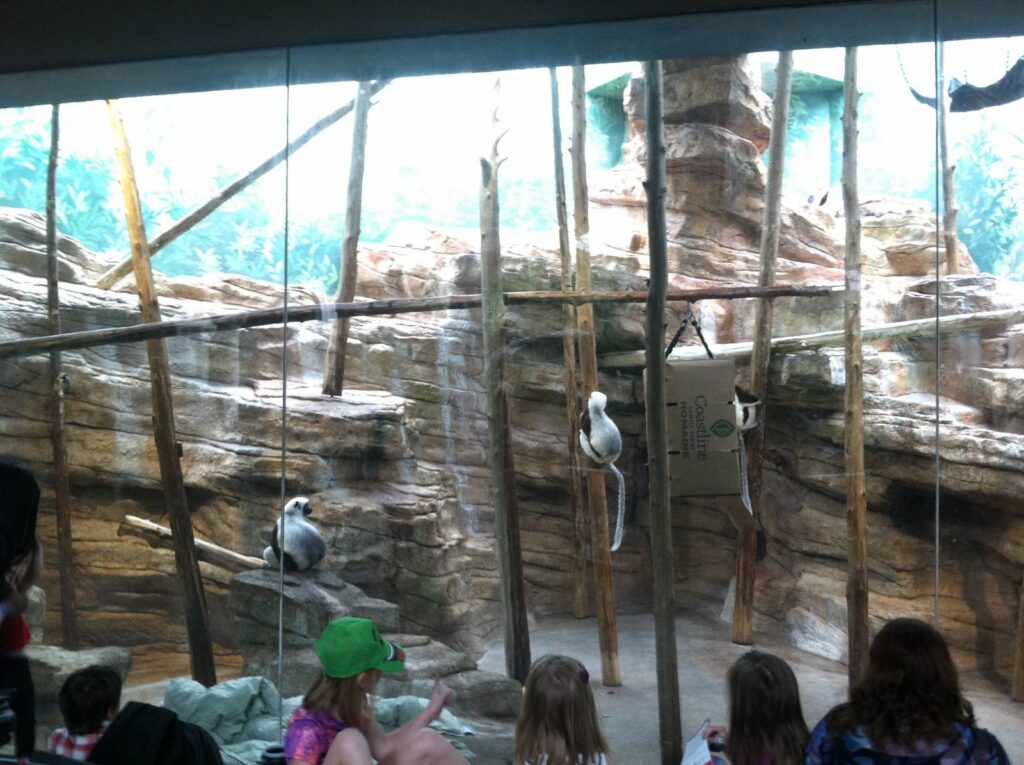
By Molina Smalley, Contributing Writer
Pictures by Molina Smalley
The following article represents the author’s opinion about a specific topic. The information is backed up and was proofread by our editors. Freedom of speech is part of the First Amendment of the US Constitution and therefore every writer has the right to share his or her opinion. Feel free to email your editors about any issues with the article or leave your comment here.
The infamous St. Louis Zoo is voted one of America’s top free attractions, dedicated to connecting people with animals. It prides itself on being the “leading zoo in animal management, research, conservation, and education.” With many attractions and highlights, the St. Louis Zoo is “home” to over 17,000 animals of 600 different species. All these animals are squeezed into some 90 acres of land, bang on in the middle of the busy city. Thousands of people visit this very zoo daily, bringing their loved ones and making a full day of it. You may have explored it once or maybe even twice, thinking it was the most amazing experience you’ve ever had, and then left feeling educated and mesmerized. I, too, visited the St. Louis Zoo this past weekend. However, I left feeling devastated, enraged and powerless.

Despite the zoo’s concern for animal welfare, I would describe it more as of a collection of interesting animals imprisoned against their will and nature. At best, any form of captivity cannot even begin to replicate a wild animal’s habitat; it isn’t as easy as planting few trees and replicating rocky outcrops. Captive animals are stripped of their basic instincts and forced to live in tiny, unfamiliar spaces. They are prevented from running, flying, and foraging with others of their own kind. Zoos teach visitors that it is acceptable to interfere with animals and keep them locked up, where they are bored, restricted and lonely, deprived of all control and far from anything that may resemble their natural home.
The most disturbing attraction I witnessed at the St. Louis Zoo was the “Primate House,” a confinement containing lemurs, apes, monkeys, and marsupials. As obvious as it sounds, the Primate House is a white Spanish-style building inside which the animals are exhibited behind glass display windows. Yes that’s right, display windows, similar to the ones you may see whilst window shopping at the mall! When you peer into these small glass windows you will see jungle gyms, fake branches, swing sets, ropes, and artificial rock formations, not a tree or leaf in sight with no source of natural light. Among all this deception, you may find a confused lemur or a distressed monkey. These poor creatures have nowhere to hide. They are trapped behind their screens, surrounded by visitors who “ooh and ahh,” while laughing and pointing at them, and sometimes even bang on the glass, making a mockery of their situation. If they choose to hide away, they are likely to be forced out. I’m not sure how one can walk through this house of terrors without shedding a tear. I know I certainly did. The Primate House should be renamed the “Primate Prison,” a title that would be better suited for the reality of the animals housed in this facility.

What is more, rather than promoting respect and understanding of these astonishing animals, their enclosures provide little to no information on the diet or habitat of the inmates. Their normal behavior is seldom discussed because the natural needs of the animals are almost never met, plus the hunting and mating habits are virtually eradicated by regulated feeding and breeding regimens. Animals have little to no privacy and have pretty much no opportunity for mental stimulation or physical exercise.
The Primate House isn’t the only attraction that devastated me; Antelope Area and Big Cat Country were definitely two other places I would not want to visit again. Unfortunate gazelle and buck, herd orientated in the wild, are stuck in cramped enclosures and kept alone or at most in pairs. Lions and cheetahs are forced to walk around in spaces smaller than my own garden, with no place to run or play.
I grew up in Namibia, a Southern African country so I am perhaps privileged to have seen magnificent wild animals roam free in their natural habitats. It is hard for me to understand why people would want to see them locked up in zoos.

The St. Louis Zoo claims to provide educational opportunities; however, most visitors only spend a brief time at each display, looking for entertainment rather than enlightenment. If the conservation is the goal of this zoo, better living conditions for the captive animals should be attempted.
As it is, the captive animals in St. Louis are merely exhibits deprived of dignity and compassion which should be afforded to every living creature.
So, for now, it is thumbs down from me to the St. Louis Zoo.
Thank you for sharing your perspective on the STL zoo, Molina. You offer much to think about!